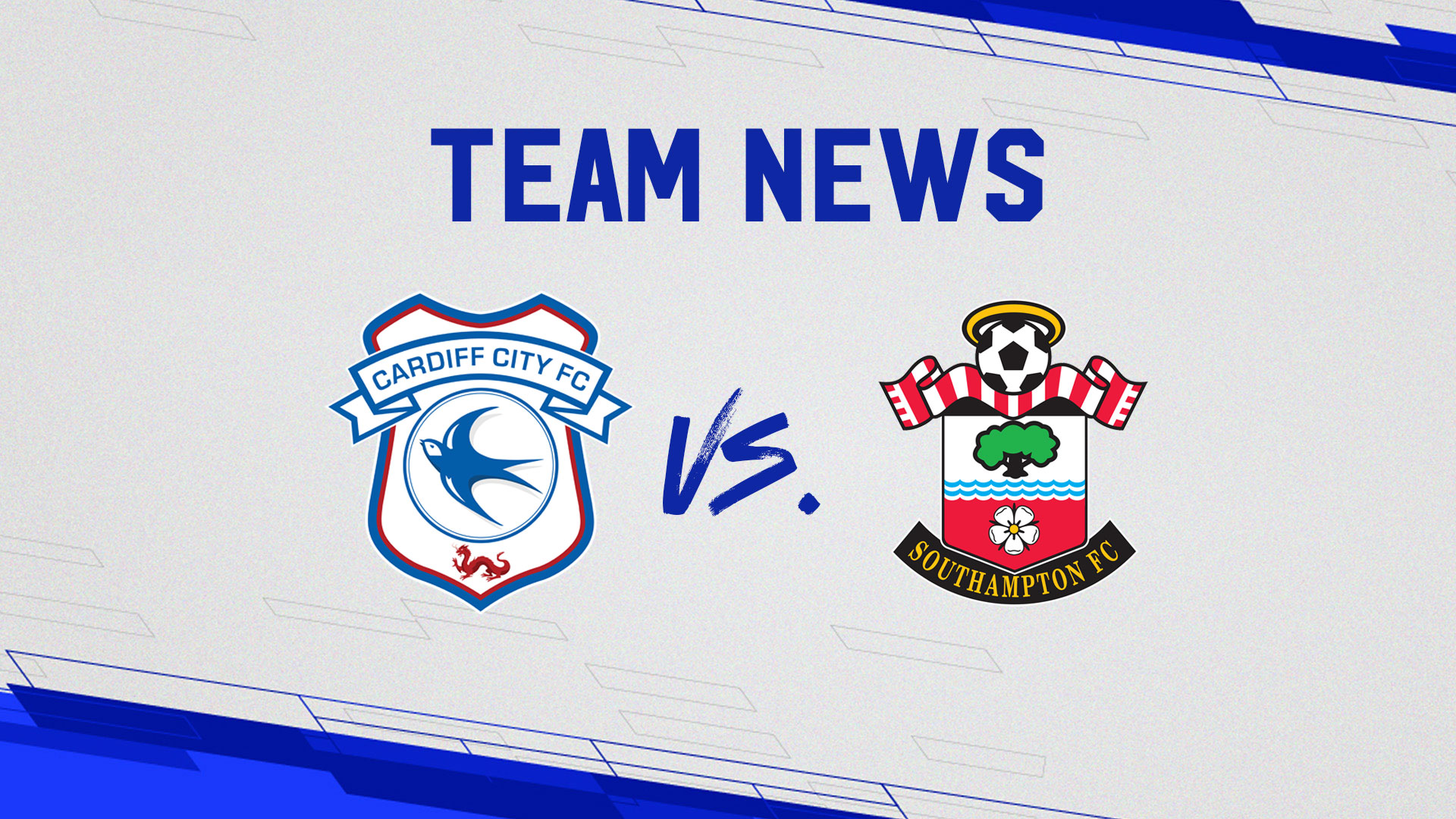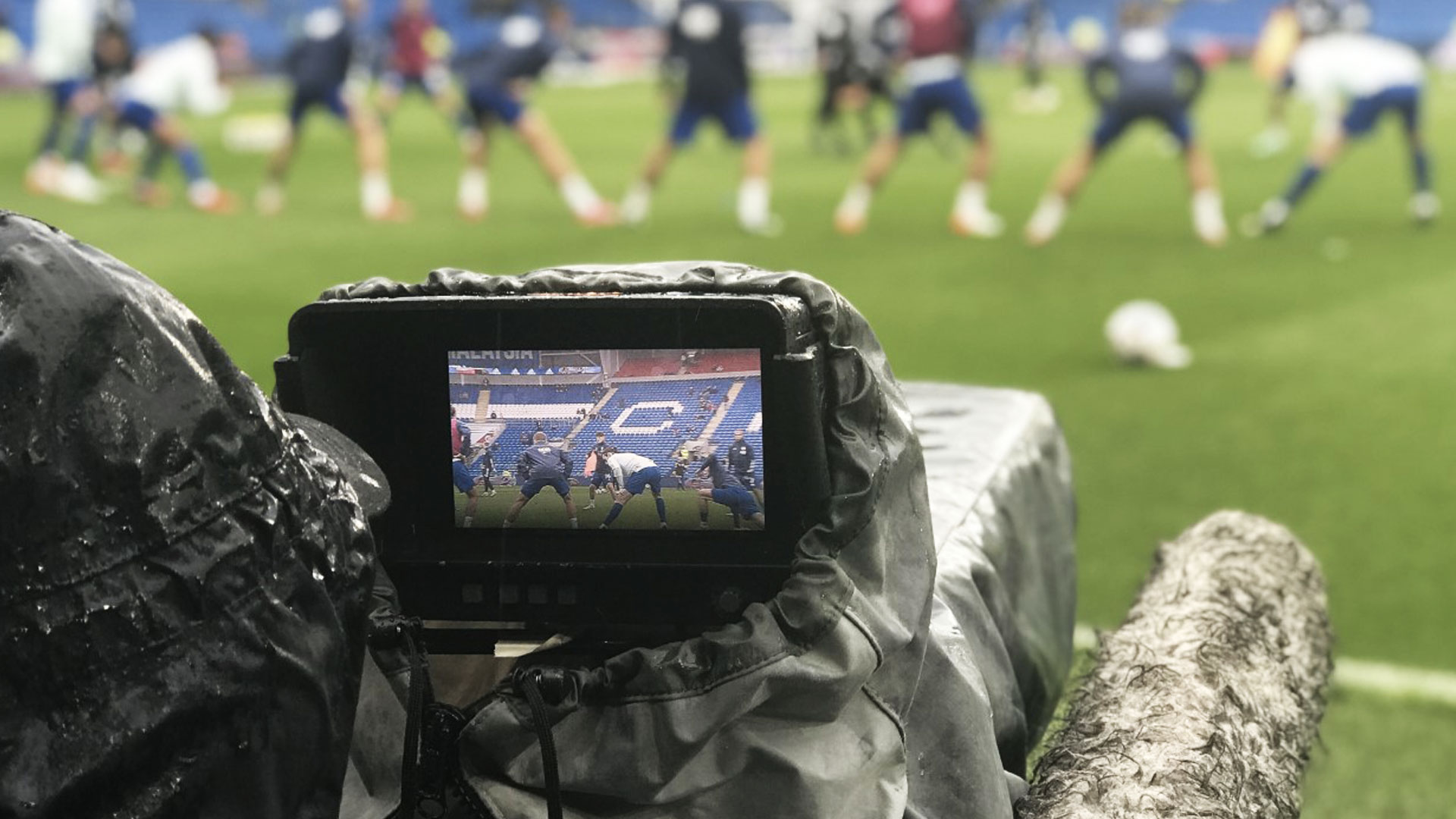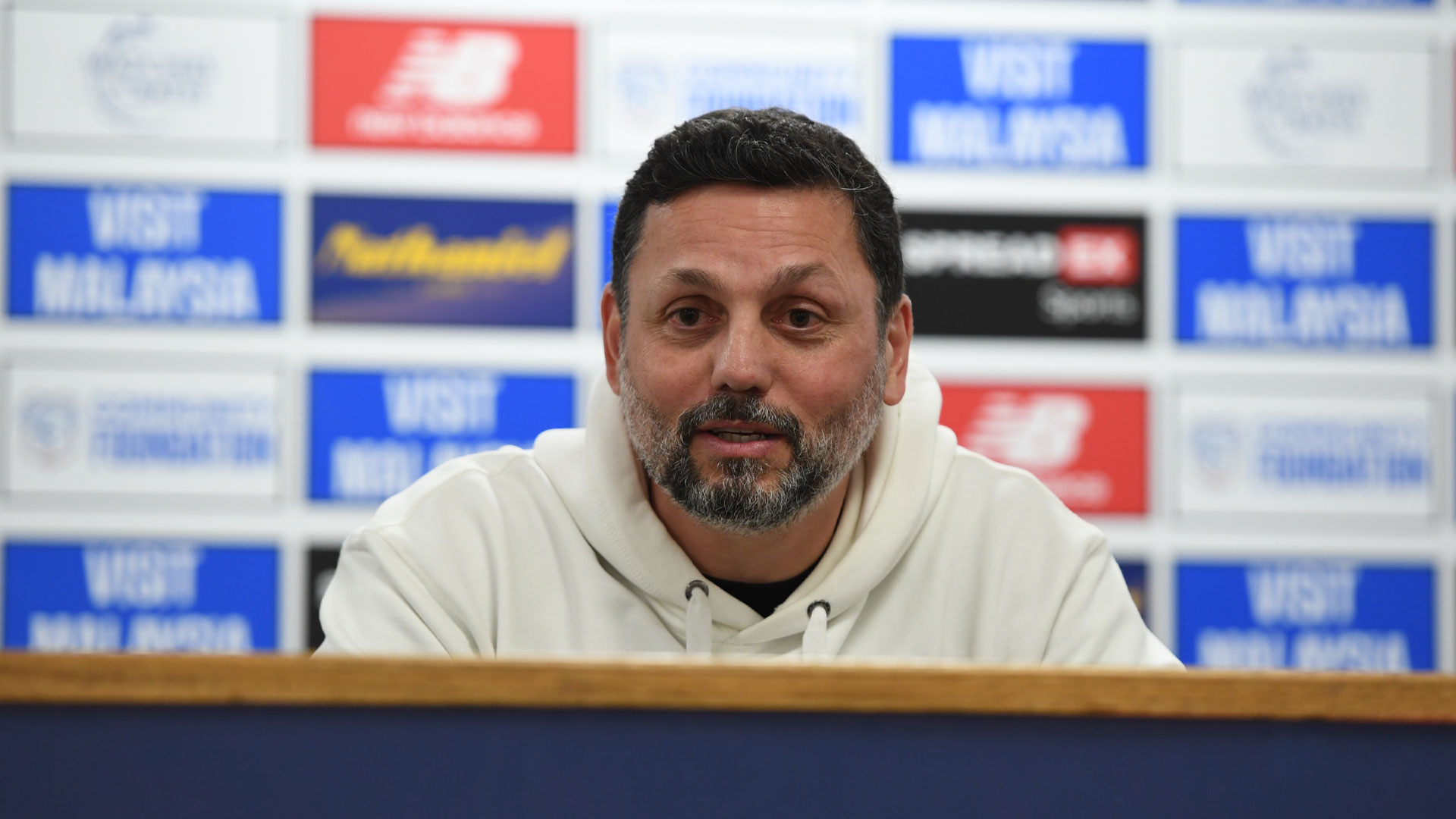1947-1964 POST-WAR RECOVERY
History
20th March
Ford, Allchuch, Charles - and a double stint for Cyril
A shock awaited City fans on the resumption of football at the end of hostilities when manager Cyril Spiers abruptly resigned and joined Norwich City.
Herbert Merrett wasted no time by going a short distance down the A48 to engage Billy McCandless from Newport County. McCandless had steered County into Division Two at the end of the 1938-39 season, but the war years had a devastating effect on the Gwent side. They were unable to cope with the higher standard and dropped straight back to Division Three (South) after just one season.
Jackie Pritchard, a promising goalkeeper, was the only City player to lose his life during the war. Several others, including Billy James and Billy Baker, were prisoners-of-war and in James' case the privations suffered after being captured by the Japanese was to lead to early retirement from the game.
McCandless instilled consistency into his side and he was rewarded when his regular first team of ten Welshmen and one Englishman won the Division Three (South) championship title. Crowds were high everywhere, none more so than at Ninian Park where 51,626 were present on Easter Monday, 1947 for the derby match with Bristol City which ended with a Stan Richards goal giving City a 1-1 draw.
Such was Cardiff's supremacy in the Division that they finished nine points clear of second-placed Queens Park Rangers. Locally-born centre forward Richards had made a scoring debut in the opening game of the season at Norwich, and by the end had collected thirty league goals to create a record for the club (that stood until Robert Earnshaw broke it in 2002/03).
Fred Stansfield lifts the Division Three (South) Championship
The following season, McCandless ended his short stay at Ninian Park by accepting an offer to manage Swansea Town and, in a surprise move, Cyril Spiers was brought back for a second spell as Cardiff City prepared for Division Two. Alf Sherwood, Ken Hollyman and Billy Baker were all permanent fixtures in the team and there was also a place for Dougie Blair - son of former City stalwart Jimmy, who had arrived from Blackpool.
Attendances at Ninian Park were averaging over 36,000 with 56,018 at the ground in October 1948 to watch Tottenham Hotspur win 1-0.
'Training' at Porthcawl, Ken Hollyman (right) and Arthur Lever give Billy Baker a dip in the sea!
The 1950-51 season brought hope of what was to come when the Bluebirds just missed out on promotion. Wilf Grant was switched from wing to centre forward and his goals were to prove crucial to City's hopes of a return to Division One. The Bluebirds fulfilled their promise by finishing the 1951-52 season as runners-up to Sheffield Wednesday, but it required a tremendous finish to the season to secure second place after a number of indifferent performances had left City adrift of the pace.
It all came down to the last game of the season on May 3, 1952 and 52,000 fans crammed into a rain-soaked Ninian Park to watch their favourites play Leeds United. This was an amazing crowd figure because it was also the date of the FA Cup Final; so while Newcastle United were beating Arsenal 1-0, City beat Leeds United 3-1 to win promotion back to the top flight for the first time since 1929. New signing Ken Chisholm netted twice, and leading scorer Grant hit the other to take his tally for the season in all games to twenty-six.
The first season back in Division One ended in a creditable twelfth place and the fans showed their approval by averaging over 38,000 for home games. City's record home attendance for a league match came when 57,893 flocked to Ninian Park to see league champions Arsenal hold out for a 0-0 draw. In December 1953, Cardiff paid their highest transfer fee to date when they signed Welsh international centre forward Trevor Ford (lead image) from Sunderland. He immediately began repaying the £30,000 fee by scoring the only goal against Middlesbrough on his home debut.
Despite finishing two places higher, manager Spiers resigned at the end of the season for reasons never made public. Trevor Morris, who had come to the club as a player but whose career was cut short by injury, moved up from secretary to take his place. City's fortunes took a nosedive though, and only a 3-2 victory over Wolverhampton Wanderers in the last game of the season staved off relegation. Ford grabbed two of the goals with the other coming from his new young strike partner, Gerry Hitchens.
The 1955-56 season saw many ups-and-downs as City became evermore inconsistent. Indeed Wolves returned to Ninian Park in September and thrashed the Bluebirds 9-1. A sequel to this defeat came on New Year's Eve when City travelled to Molineux for the return. Ford and Hitchens were again on target as City won 2-0 to take Wolves' home record and gain revenge for that earlier beating. Few saw it coming.
Mainstay of the Bluebirds side during the season was centre half Danny Malloy who was signed from Dundee for £17,000 in December, 1955. One year later there was a remarkable debut for Neil O'Halloran who scored a hat-trick against Charlton Athletic, but the writing was on the wall and City slipped down to seventeenth position. Events finally caught up with the Club and in 1957 they were relegated after managing only ten wins from forty-two starts.
The form of Hitchens had attracted a number of top clubs and in December 1957 he was transferred to Aston Villa. He would later go on to win seven caps for England and enjoy a lengthy spell in Italy where he played for Inter, Atalanta, Torino and Cagliari before returning to Wales. He died tragically of a heart attack when only forty-eight years of age.
During this period, City had an amazing sequence in the FA Cup. In 1955-56, 1956-57, and 1957-58 they were drawn away to Leeds United in the third round. As if that coincidence was not enough, the Bluebirds won all three games by the same 2-1 scoreline!
In July, 1958, manager Morris resigned to take the well-worn path to the Vetch Field and City's coach Bill Jones took over the hot seat. Cardiff made a poor start to the season and were near the bottom of the division when Jones signed Barry-born centre forward Derek Tapscott from Arsenal. With eighteen-year-old Graham Moore also forcing his way into the team, City began an upturn in fortune and ended the season in ninth place.
City leaving for an F.A. Cup tie at Norwich: (L-R in windows) Walsh, Baker & Reynolds. (On the Platform) Milne, Sullivan, Malloy, Jenkins, Stitfall, Tapscott, Hewitt, Milne.
The Bluebirds maintained that improvement during the following season and a 1-0 victory over Aston Villa in April, 1960 ensured promotion back to Division One. City's winner came from Moore in front of an ecstatic 55,000 crowd, but a poor run-in to the end of the season meant that Villa were promoted as champions. Floodlighting came to Ninian Park in the summer of 1960 but the return to Division One would not be a long stay. Within two seasons the club was back in Division Two.
Jones brightened up the mood of the Welsh public in the summer of 1962 when he went to Newcastle United and signed Ivor Allchurch (lead image) for an £18,000 fee. But poor results at the start of the 1962-63 season led to the dismissal of Jones, and in November 1962 City appointed George Swindin, the former Arsenal goalkeeper, as their new manager. Swindin excited all Bluebirds fans by signing the legendary John Charles from Roma in 1963. He scored a goal from a reputed seventy yards on his home league debut against Norwich City to signal his arrival.
A tenth placing followed by a slump to fifteenth the following season made Swindin's position untenable though, and there was yet another change at the top. In June, 1964, when Swindin was forced to resign, the City board appointed Jimmy Scoular as the new manager. He would become one of Cardiff City's most famous managers of all time.
CLICK HERE FOR THE NEXT CHAPTER!
Herbert Merrett wasted no time by going a short distance down the A48 to engage Billy McCandless from Newport County. McCandless had steered County into Division Two at the end of the 1938-39 season, but the war years had a devastating effect on the Gwent side. They were unable to cope with the higher standard and dropped straight back to Division Three (South) after just one season.
Jackie Pritchard, a promising goalkeeper, was the only City player to lose his life during the war. Several others, including Billy James and Billy Baker, were prisoners-of-war and in James' case the privations suffered after being captured by the Japanese was to lead to early retirement from the game.
McCandless instilled consistency into his side and he was rewarded when his regular first team of ten Welshmen and one Englishman won the Division Three (South) championship title. Crowds were high everywhere, none more so than at Ninian Park where 51,626 were present on Easter Monday, 1947 for the derby match with Bristol City which ended with a Stan Richards goal giving City a 1-1 draw.
Such was Cardiff's supremacy in the Division that they finished nine points clear of second-placed Queens Park Rangers. Locally-born centre forward Richards had made a scoring debut in the opening game of the season at Norwich, and by the end had collected thirty league goals to create a record for the club (that stood until Robert Earnshaw broke it in 2002/03).
Fred Stansfield lifts the Division Three (South) Championship
The following season, McCandless ended his short stay at Ninian Park by accepting an offer to manage Swansea Town and, in a surprise move, Cyril Spiers was brought back for a second spell as Cardiff City prepared for Division Two. Alf Sherwood, Ken Hollyman and Billy Baker were all permanent fixtures in the team and there was also a place for Dougie Blair - son of former City stalwart Jimmy, who had arrived from Blackpool.
Attendances at Ninian Park were averaging over 36,000 with 56,018 at the ground in October 1948 to watch Tottenham Hotspur win 1-0.
'Training' at Porthcawl, Ken Hollyman (right) and Arthur Lever give Billy Baker a dip in the sea!
The 1950-51 season brought hope of what was to come when the Bluebirds just missed out on promotion. Wilf Grant was switched from wing to centre forward and his goals were to prove crucial to City's hopes of a return to Division One. The Bluebirds fulfilled their promise by finishing the 1951-52 season as runners-up to Sheffield Wednesday, but it required a tremendous finish to the season to secure second place after a number of indifferent performances had left City adrift of the pace.
It all came down to the last game of the season on May 3, 1952 and 52,000 fans crammed into a rain-soaked Ninian Park to watch their favourites play Leeds United. This was an amazing crowd figure because it was also the date of the FA Cup Final; so while Newcastle United were beating Arsenal 1-0, City beat Leeds United 3-1 to win promotion back to the top flight for the first time since 1929. New signing Ken Chisholm netted twice, and leading scorer Grant hit the other to take his tally for the season in all games to twenty-six.
The first season back in Division One ended in a creditable twelfth place and the fans showed their approval by averaging over 38,000 for home games. City's record home attendance for a league match came when 57,893 flocked to Ninian Park to see league champions Arsenal hold out for a 0-0 draw. In December 1953, Cardiff paid their highest transfer fee to date when they signed Welsh international centre forward Trevor Ford (lead image) from Sunderland. He immediately began repaying the £30,000 fee by scoring the only goal against Middlesbrough on his home debut.
Despite finishing two places higher, manager Spiers resigned at the end of the season for reasons never made public. Trevor Morris, who had come to the club as a player but whose career was cut short by injury, moved up from secretary to take his place. City's fortunes took a nosedive though, and only a 3-2 victory over Wolverhampton Wanderers in the last game of the season staved off relegation. Ford grabbed two of the goals with the other coming from his new young strike partner, Gerry Hitchens.
The 1955-56 season saw many ups-and-downs as City became evermore inconsistent. Indeed Wolves returned to Ninian Park in September and thrashed the Bluebirds 9-1. A sequel to this defeat came on New Year's Eve when City travelled to Molineux for the return. Ford and Hitchens were again on target as City won 2-0 to take Wolves' home record and gain revenge for that earlier beating. Few saw it coming.
Mainstay of the Bluebirds side during the season was centre half Danny Malloy who was signed from Dundee for £17,000 in December, 1955. One year later there was a remarkable debut for Neil O'Halloran who scored a hat-trick against Charlton Athletic, but the writing was on the wall and City slipped down to seventeenth position. Events finally caught up with the Club and in 1957 they were relegated after managing only ten wins from forty-two starts.
The form of Hitchens had attracted a number of top clubs and in December 1957 he was transferred to Aston Villa. He would later go on to win seven caps for England and enjoy a lengthy spell in Italy where he played for Inter, Atalanta, Torino and Cagliari before returning to Wales. He died tragically of a heart attack when only forty-eight years of age.
During this period, City had an amazing sequence in the FA Cup. In 1955-56, 1956-57, and 1957-58 they were drawn away to Leeds United in the third round. As if that coincidence was not enough, the Bluebirds won all three games by the same 2-1 scoreline!
In July, 1958, manager Morris resigned to take the well-worn path to the Vetch Field and City's coach Bill Jones took over the hot seat. Cardiff made a poor start to the season and were near the bottom of the division when Jones signed Barry-born centre forward Derek Tapscott from Arsenal. With eighteen-year-old Graham Moore also forcing his way into the team, City began an upturn in fortune and ended the season in ninth place.
City leaving for an F.A. Cup tie at Norwich: (L-R in windows) Walsh, Baker & Reynolds. (On the Platform) Milne, Sullivan, Malloy, Jenkins, Stitfall, Tapscott, Hewitt, Milne.
The Bluebirds maintained that improvement during the following season and a 1-0 victory over Aston Villa in April, 1960 ensured promotion back to Division One. City's winner came from Moore in front of an ecstatic 55,000 crowd, but a poor run-in to the end of the season meant that Villa were promoted as champions. Floodlighting came to Ninian Park in the summer of 1960 but the return to Division One would not be a long stay. Within two seasons the club was back in Division Two.
Jones brightened up the mood of the Welsh public in the summer of 1962 when he went to Newcastle United and signed Ivor Allchurch (lead image) for an £18,000 fee. But poor results at the start of the 1962-63 season led to the dismissal of Jones, and in November 1962 City appointed George Swindin, the former Arsenal goalkeeper, as their new manager. Swindin excited all Bluebirds fans by signing the legendary John Charles from Roma in 1963. He scored a goal from a reputed seventy yards on his home league debut against Norwich City to signal his arrival.
A tenth placing followed by a slump to fifteenth the following season made Swindin's position untenable though, and there was yet another change at the top. In June, 1964, when Swindin was forced to resign, the City board appointed Jimmy Scoular as the new manager. He would become one of Cardiff City's most famous managers of all time.
CLICK HERE FOR THE NEXT CHAPTER!



